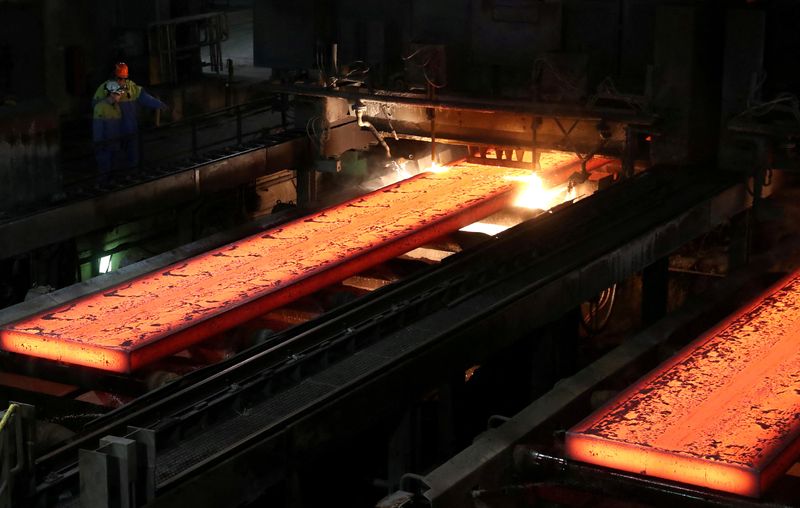U.S. floats new steel, aluminum tariffs based on carbon emissions
2022.12.07 21:22
[ad_1]

© Reuters. FILE PHOTO: Red-hot steel plates pass through a press at the Tata steel plant in Ijmuiden, Netherlands April 3, 2019. REUTERS/Yves Herman/File Photo
By David Lawder
WASHINGTON (Reuters) – U.S. officials are proposing to levy tariffs on steel and aluminum based on how much carbon the producing country’s industries emit, in a bid to fight climate change and “dirty” metals made in China and elsewhere, two people familiar with the plan said on Wednesday.
The proposal from the U.S. Trade Representative’s office to be negotiated with the European Union would create a “club” of countries seeking to reduce carbon emissions. The plan would set pollution standards in the production of steel and aluminum.
Countries with emissions exceeding the standards would pay higher tariffs when exporting metals to countries with lower emissions, the sources briefed on the plans said. Countries with steel and aluminum plant emissions at or below the standards would pay lower tariffs, the sources said.
The proposal, which is now being shared with industry and EU officials, has grown out of U.S.-EU discussions on “green” steel production over the past year after Washington agreed to eliminate tariffs on EU-produced steel and aluminum in exchange for a quota system.
U.S. steelmakers claim to have the world’s lowest carbon emissions levels, in part because 70% of American steel is made from scrap iron in electric-arc furnaces rather than coal-fired blast furnaces. Steelmakers elsewhere, including in Europe, rely more heavily on coal, and the plan would be advantageous to U.S. producers.
The U.S.-EU talks on low-carbon steel have been aimed in large part at China, which relies on coal for most of its steel output as well as low-grade iron ore that contributes to high carbon emissions.
If implemented, the plan would provide new grounds for excluding Chinese steel from Western markets. Most U.S. tariffs are currently based on anti-dumping laws to combat pricing below production costs, laws aimed at combating unfair government subsidies or laws aimed at safeguarding strategic industries.
“There would be an advantage of being in the club, as it would provide a lower level of carbon tariffs, while countries outside the club would pay higher tariffs,” one of the sources said, adding that the proposal aimed to incentivize investments to reduce emissions.
“This is all very conceptual and there’s a lot of work ahead on this. The details are going to be very important.”
A spokesperson for USTR did not immediately respond to a request for comment on the plan.
[ad_2]
Source link








